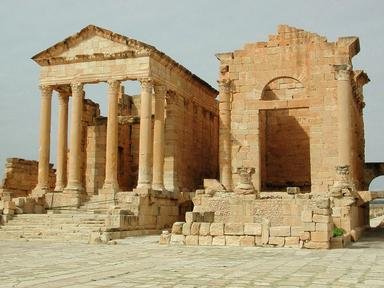Quiz Answer Key and Fun Facts
1. This warrior queen, of the Hausa of 16th Century northern Nigeria, ruled a kingdom known as Zazzau (or Zaria). She ruled for 34 years and was a noted warrior until her death past the age of 70. She introduced the cultivation of kola nuts to the area and helped establish the vitality of Hausa trade throughout her and neighboring kingdoms. Who was she?
2. This great warrior queen has been referred to by historian John Henrik Clarke as "the greatest military strategist that ever confronted the armed forces of Portugal", as she kept that European power from successfully colonizing Angola for over 40 years, even allying with the Dutch to do so. She died as a warrior in her 80s, never having admitted defeat. Who was she?
3. This great queen attempted to prevent European seizure of Africa. She was the leader of the last major war by Africans against Europeans to be led by a woman. She led the Ashanti of modern Ghana in 1900 in the "War of the Golden Stool", earning the respect of the British, who referred to her as "the Joan of Arc of Africa." Who was this iconic woman whose name is also applied to the military resistance of the Ashanti against the Brits?
4. This African warrior queen became queen of the Azna (Hausa people), at the age of 20 and would later be called the "Panther Queen." In 1899 she fought against the French takeover of her capital of Lougou. And, although she had successfully resisted takeovers by the Fulani and the Tuareg, the French would eventually overcome her. Who was this legendary figure?
5. Egypt - This queen was wife of Amenhotep III, mother of Akhenaton (Amenhotep IV), and grandmother or mother of Tutankhamun. Her father, Yuya, was from Upper Egypt and a non-royal. Who was this long lightly-regarded queen of the 18th Dynasty?
6. This fifth century woman of Alexandria, the daughter of a mathematician, was herself the world's leading mathematician and astronomer of her time, the only woman who could make such a claim. Before being murdered by a Christian mob in AD 415, she wrote extensively, taught philosophy, and corresponded with and hosted other scholars of her day. Can you name her?
7. These two Christian martyrs were executed in Carthage in 203 AD. Who was this pair of women, one a 22-year-old noblewoman and mother of a young child, and the other her slave in her eighth month of pregnancy, whose throats were slashed in the arena along with half a dozen Christian men who were killed by beasts?
8. This warrior queen was the Berber leader known to the Arabs as "the Priestess" or "the Sorceress." She ruled a kingdom in Numidia (today's Algeria) and, around AD 700, forced the retreat of the Muslims from their eventual conquest of North Africa. Who was this Berber warrior?
9. With the title of "Foremost of Women," this lady is recognized as a co-founder of Egypt's First Dynasty. The earliest-known named royal lady of Ancient Egypt, it is unclear whether she was actually the wife of Narmer (Menes) or not. At one time she was even thought to be a male pharaoh. Who is this figure who may have been Egypt's first female pharaoh when she ruled as regent for Djer, Egypt's third pharaoh?
10. In September of 1916, this lady was crowned "Elect of God, Lion of the Tribe of Judah and Queen of Kings of Ethiopia." She was the first female to rule Ethiopia since Makeda, the Queen of Sheba. At her death in 1930, she was succeeded by her cousin, Tafari Mekonnen, who would become known as Haile Selassie. Who was this empress?
Source: Author
shvdotr
This quiz was reviewed by FunTrivia editor
bloomsby before going online.
Any errors found in FunTrivia content are routinely corrected through our feedback system.
